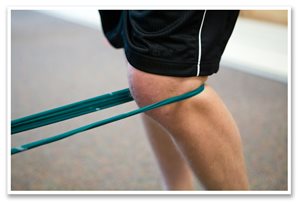Amy O’Connor is a sports injury rehabilitation specialist at Perfect Balance Clinic.
Amy’s interest in rehabilitating sports injuries stems from when she tore her ACL in 2006. Having played football at a high level, as well as run a number of road races, Amy understands the importance of being in peak physical condition to facilitate high level performance. Her post-operative treatment and rehabilitation plan following her injury sparked passion for helping others get back to their best.
During her degree, Amy worked closely with head athletic trainers to assemble rehabilitation programmes for professional sports teams and elite athletes. On graduating, Amy became a Head Athletic Trainer herself, and worked primarily on the diagnosis, treatment, rehabilitation and prevention of injury to over 450 student athletes. These injuries included fractures, dislocations, sprains and strains. Some other issues that she dealt with were dermatological based as well as many psychological problems.
INJURY REHABILITATION FOR A FRACTURED FOOT
Whilst working in America, Amy was head sports rehabilitation trainer of both Softball and Field Hockey teams . Although not limited to these teams, Amy spent the large majority of her time diagnosing, treating, preventing and rehabilitating the girls. She was tasked with tending to a dislocated shoulder in the first week of practice and subsequently went on to fully rehabilitate the athlete after a labral repair.
Download our free advice on shoulder injury rehabilitation
Amy is also proficient in modalities that aid in the healing a recovery process. These include electrical stimulation, ultrasound, light and laser therapy and cryotherapy.. Her specialty areas are post surgical treatment and rehabilitation as well as overuse injuries in the athletic population.
Some of Amy’s most interesting sports injury rehabilitation cases:
- ACL reconstruction rehabilitation. Therapy would begin 2-3 days following surgery and would be focused on achieving full range of motion, regaining strength, decreasing inflammation, decreasing pain and wound care. Once the initial phases were complete the program would become driven towards gait control, proprioception and strength gains.
- Menisectomy rehabilitation following surgery. Primary focus is to achieve full range of motion, full strength, full flexibility and normal proprioception. Decreasing pain and inflammation in the initial stages are also important factors.
- Ulnar nerve release (cubital tunnel syndrome): Primar importance is given to desensitising wound site initially to help progression of maintaining wrist and shoulder integrity. Following this, increasing elbow range of motion is possible with specific ulnar nerve stretches and gentle progression in regaining strength with the musculature surrounding the elbow.


